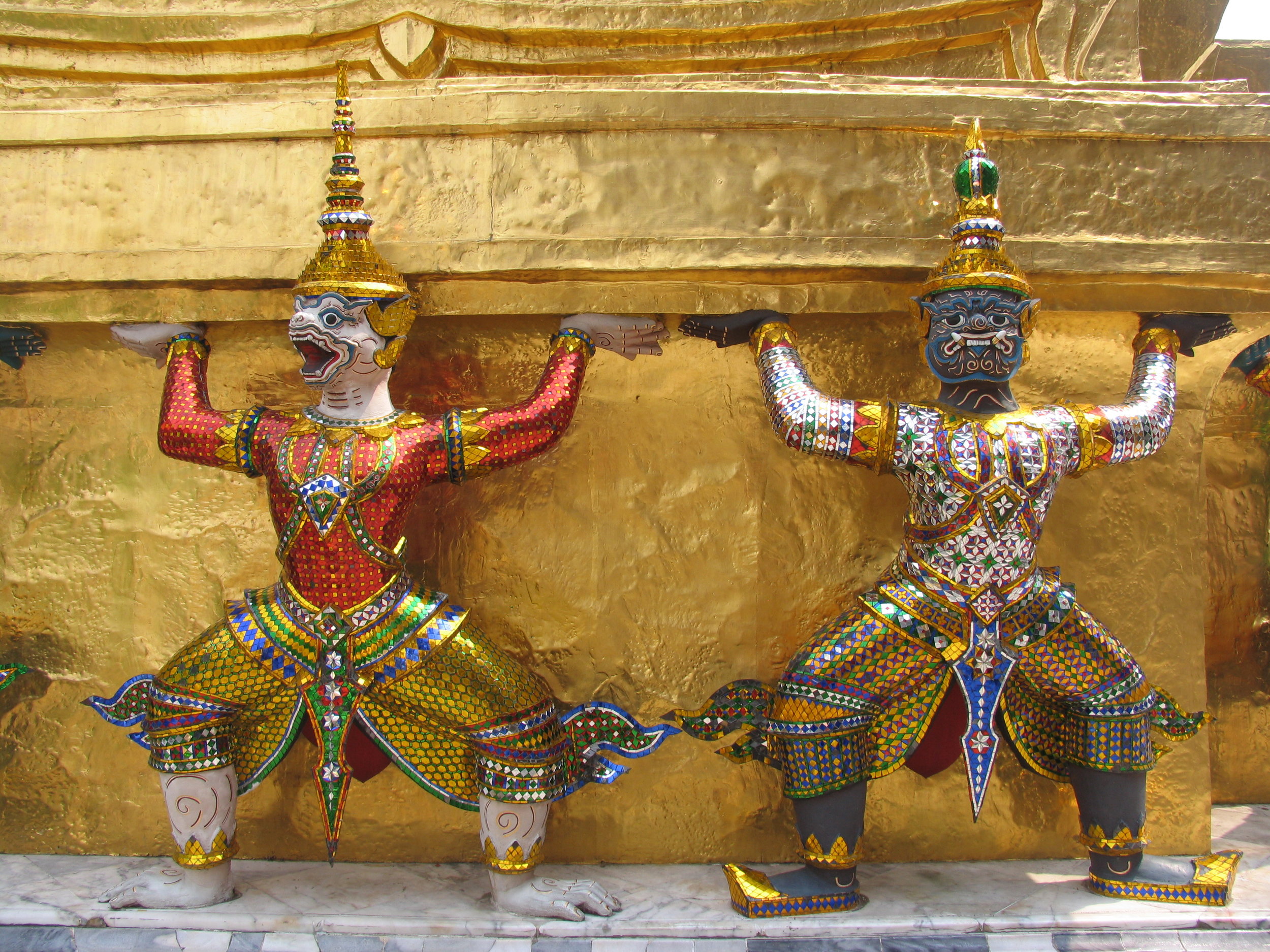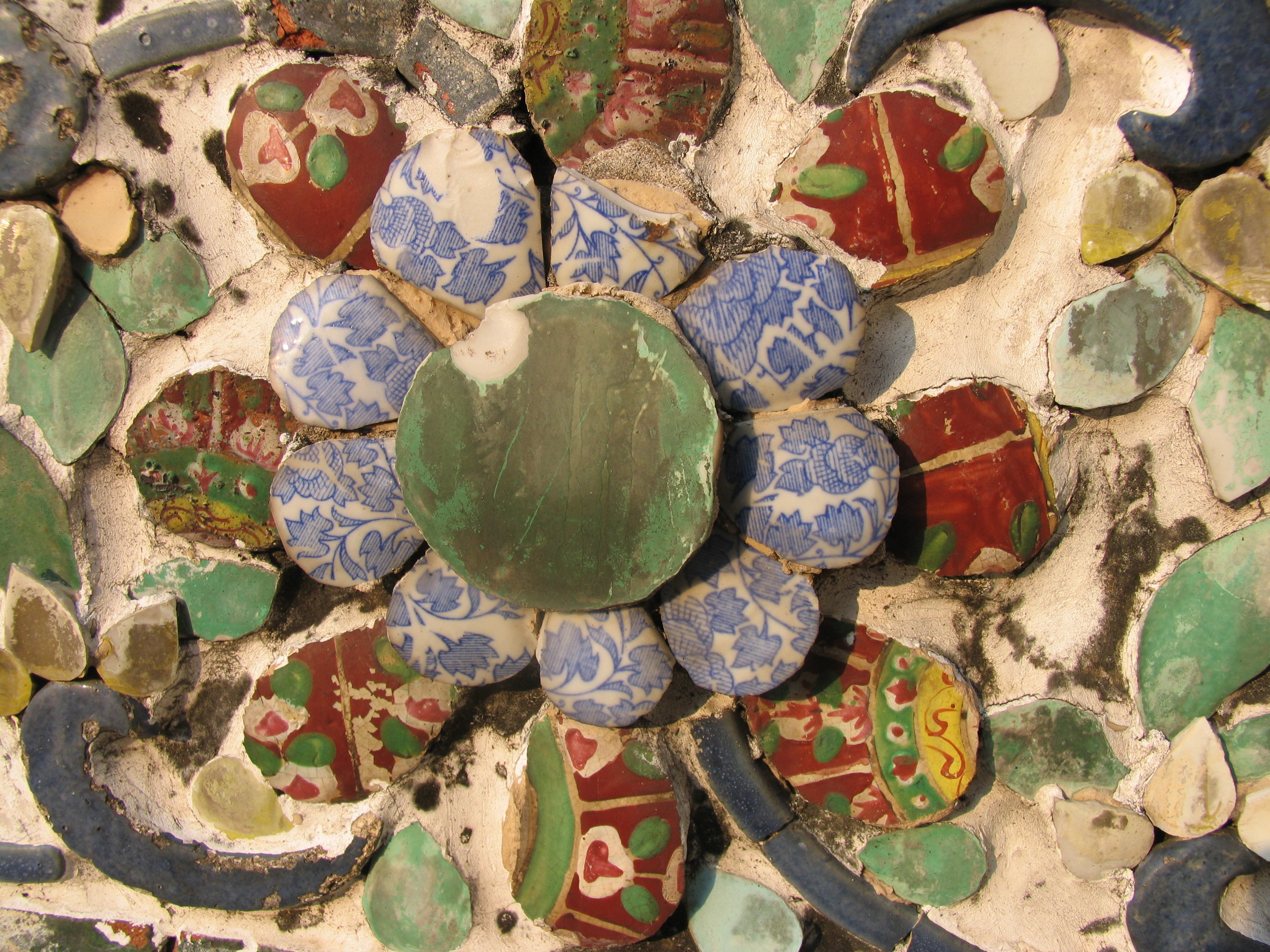Bangkok Thailand – the name alone evokes images of a mysterious oriental cityscape of busy streets, sidewalk vendors, bustling markets, exotic entertainments, and striking Buddhist architecture. As the capital of modern Thailand and the center of its burgeoning economy Bangkok is a multifaceted city filled with myriad delights and destinations. Known as the “Venice of the East” because of its many canals and water-bourn culture (the word Bangkok means “water-flower village”), Thais themselves refer to the city as Krung Thep, City of Angels.
Wat Phra Kheo buildings
Bangkok’s history is relatively brief. Following the fall of Ayuthaya (Siam’s historic capital and a World Heritage site - an easy daytrip from Bangkok) to the Burmese in the late 18th century, Siamese society was fractured and prostrate. A hero emerged, Taksin, who rallied and united the Siamese people and established a new capital at Thonburi on the Chao Phraya River. The next king, Chao Phraya Chakri (Rama I, founder of the current dynasty) moved the capital across the river and founded Bangkok in 1782. Bangkok has been Siam/Thailand’s capital and primary city ever since. Rama undertook an ambitious building program including the Grand Palace complex and Wat Phra Kaew in an attempt to recapture the lost glory of Ayuthaya. Other important Wats and palaces followed in successive decades.
From a western perspective, Bangkok burst into the public consciousness during the Vietnam War as American GIs flocked here on leave. The Southeast Asian economic boom of the 1980s and ‘90s fueled the explosive expansion of Bangkok into the teeming metropolis of 10 million it is today.
Bangkok’s top sights are clearly the Grand Palace complex and Wat Pho. The highlight of a Grand Palace visit is Wat Phra Kaew, home of the Emerald Buddha. The complex is a jaw-dropping collection of spectacular buildings, monuments, and statues. The entrance is guarded by two fantastic yaksha, or mythical giants. The compound walls are lined with beautifully restored murals of the Ramakian (Thai version of the Ramayana). The grounds are punctuated by multiple stupas, with their dramatically and diversely decorated prangs (spires). Many stupas are ringed by elaborate mythical warriors. The bots (temples buildings) are decorated by colored tiles and tiny mirrors – quite dazzling. Brightly gilded mythical statues add to the fantastical, mystical ambiance.
Phra Kheo garudas
Next door Wat Pho is Bangkok’s oldest temple. Pho is another complex of beautiful bots and stupas (more than 100) and home to Thailand’s largest reclining Buddha. The striking, 150 foot long, gilded gold statue barely fits in its bot. The soles of the feet are particularly interesting, displaying 108 auspicious laksana (characteristics of the Buddha) in mother of pearl. Thailand’s largest collection of Buddha images (almost 400) is also housed here. Lastly, Wat Pho is the national center for traditional Thai medicine, including Thai massage. There is no better place in the country for this obligatory experience. For about $10, one can experience 90 minutes of therapeutic, relaxing heaven.
Wat Pho reclining Buddha
Bangkok’s third signature sight is Wat Arun – the Temple of the Dawn. Its 266 foot Khmer-style prang dominates the Thonburi side of the Chao Phraya River. Wat Arun was founded by Taksin but the tower itself was built by Ramas II and III in the early 19th century. One of Arun’s unique and pleasing features is its creative design and decoration. The materials used are a lesson in early Asian recycling. The entire stupa is decorated with broken Chinese porcelain. Eighteenth century Chinese trading ships used tons of broken porcelain as ballast, providing inexpensive, readily available materials.
Wat Arun
Imprint Tours recently completed another successful tour of Thailand, the jewel of Southeast Asia - our favorite tour. We have made the decision to repeat both Vietnam and Thailand again in February 2020. If you’d like more information, here are the links to the respective tour pages.
Vietnam
Thailand
OR - contact us at info@imprinttours.com






